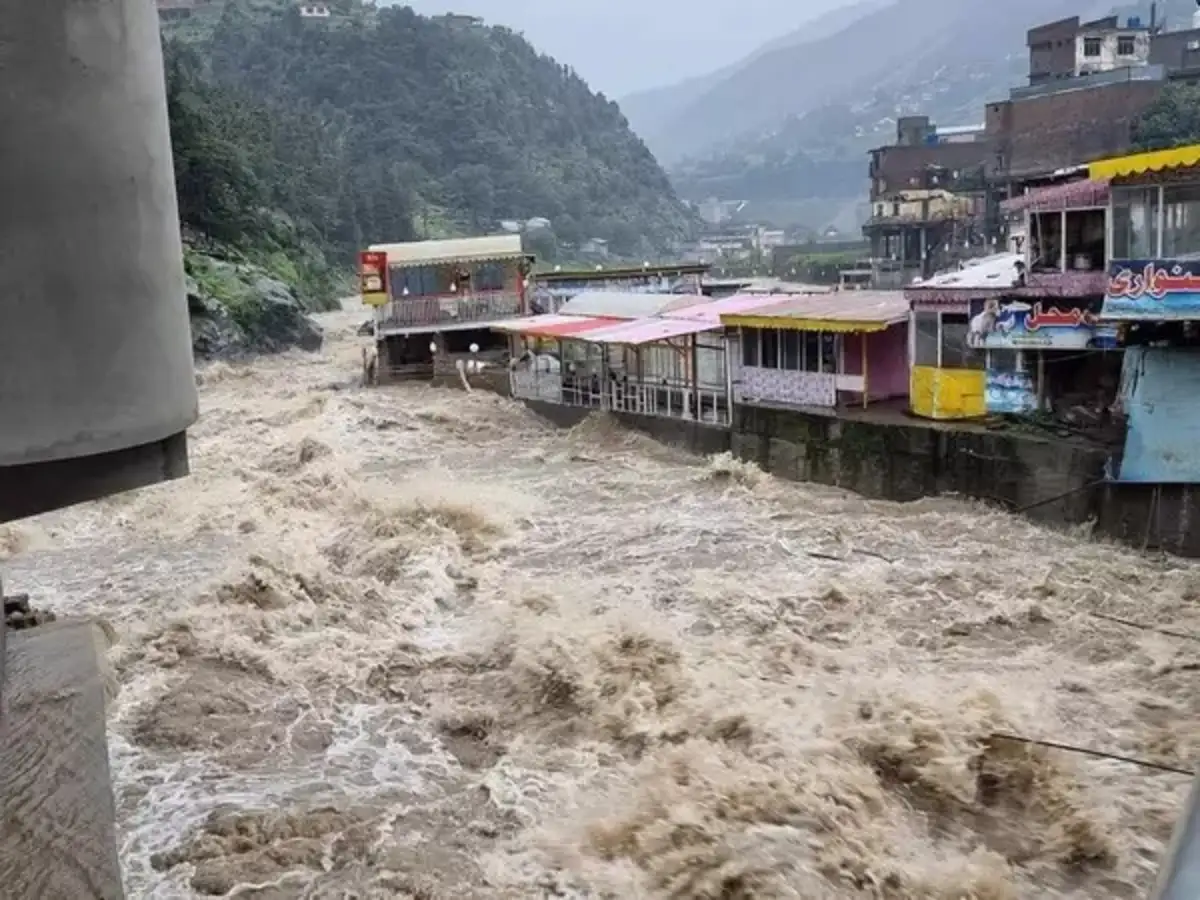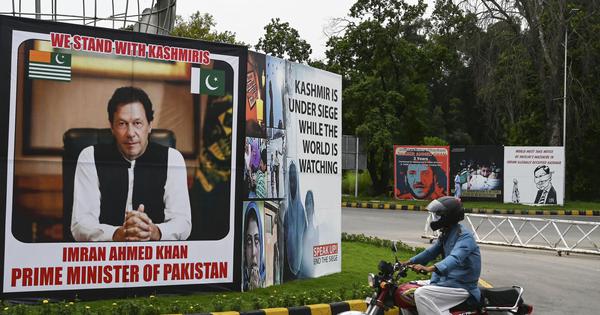Pakistan Floods 2025: Nearly 250 Dead in Khyber Pakhtunkhwa as Climate Change Fuels Monsoon Disaster
By: Javid Amin | 16 Aug 2025
The summer of 2025 will be remembered as one of the darkest monsoon seasons in South Asia. Within just 24 hours, devastating floods and relentless rains claimed nearly 250 lives across Pakistan, with Khyber Pakhtunkhwa (KP) province emerging as the epicenter of the crisis. From submerged villages to collapsed homes, from stranded tourists to heroic rescue missions, the unfolding tragedy paints a grim picture of how climate extremes are reshaping lives and landscapes.
This article takes a deep dive into the human, social, environmental, and political dimensions of the floods—offering both real-time updates and reflective insights.
What Happened? A Snapshot of the Disaster
- Death Toll: Over 243 confirmed dead in Pakistan in a single day, according to the National Disaster Management Authority (NDMA). Buner district alone accounted for 157 fatalities.
- India Link: In Indian-administered Kashmir, a cloudburst in Chositi village, Kishtwar, killed at least 60 people, with more than 80 missing.
- Combined Regional Toll: Over 280 deaths across India and Pakistan in less than 48 hours.
This was not just a flood—it was a convergence of torrential rains, lightning strikes, flash floods, landslides, and infrastructure collapse.
Epicenter: Khyber Pakhtunkhwa’s Agony
Buner District – Ground Zero
- Buner alone recorded 157 deaths—a number that dwarfs other districts combined.
- Homes were washed away within minutes, leaving families without shelter or belongings.
- Eyewitnesses describe walls of water sweeping through villages, uprooting everything in their path.
Other Districts in Distress
- Bajaur: At least 16 people killed; a relief helicopter carrying food and medicines crashed due to bad weather, killing all five crew members.
- Swat Valley: Over 2,000 people evacuated as rivers breached embankments.
- Mansehra: 1,300 tourists stranded were rescued by combined military and civilian efforts.
- Battagram & Gilgit-Baltistan: More than 20 deaths reported alongside infrastructure destruction.
Rescue and Relief Efforts
Emergency Response
- Prime Minister Shehbaz Sharif chaired an emergency meeting, directing immediate mobilization of military, NDMA, and provincial disaster response teams.
- Pakistan Army helicopters carried out aerial evacuations, dropping rations where ground access was cut off.
- Civilian volunteers, including youth groups and local NGOs, joined in distributing food, blankets, and clean water.
Heroism and Tragedy
- The helicopter crash in Bajaur underlined the dangers rescuers face while saving lives.
- Social media is flooded with videos of soldiers carrying children on their shoulders, doctors treating patients in makeshift tents, and villagers forming human chains to rescue the stranded.
Gaps and Challenges
- Many remote areas remained inaccessible due to landslides.
- Shortage of tents, medicines, and clean drinking water.
- Communication breakdowns delayed coordination in some districts.
Climate Context: Why Are These Floods Becoming Deadlier?
Experts say this is not a random disaster—it’s part of a larger climate crisis.
Changing Monsoon Patterns
- South Asia’s monsoon is becoming more erratic and intense.
- According to a World Weather Attribution (WWA) study, rainfall this season has been 10–15% heavier due to global warming.
Himalayan & Mountain Fragility
- The Himalayan and Karakoram ranges are extremely sensitive to climate shifts.
- Flash floods triggered by cloudbursts, glacier melt, and sudden storms are increasingly common.
Human Factors
- Deforestation in northern Pakistan has reduced natural barriers against landslides.
- Unregulated urbanization along riverbanks has increased flood vulnerability.
- Poor drainage systems have amplified waterlogging in towns.
Regional Impact Beyond Pakistan
Indian-Administered Kashmir
- In Kishtwar’s Chositi village, a cloudburst led to a deadly flash flood.
- 60 confirmed dead, 80+ missing, 300 pilgrims rescued, and 4,000 people evacuated.
- The disaster mirrored Pakistan’s experience, showing how climate disasters ignore borders.
Gilgit-Baltistan & Pakistan-Administered Kashmir
- Ghazar district (GB): At least 10 deaths reported.
- Pakistan-administered Kashmir: 7 confirmed fatalities as rivers overflowed.
A Shared Himalayan Tragedy
These events underscore how the Himalayan belt, stretching from Kashmir to Ladakh to Gilgit, is now a high-risk zone for extreme weather.
Human Stories: Faces Behind the Numbers
Survivors’ Voices
- “The water came like a monster. We barely saved our children,” says Afsana Bibi, a mother in Buner.
- “Our house is gone. Everything we worked for is under the mud,” recounts Muhammad Iqbal from Swat.
Stories of Courage
- Villagers in Bajaur formed rescue chains to save children from drowning.
- In Mansehra, young volunteers opened their homes to stranded tourists.
Grief and Loss
Every statistic hides a story of heartbreak—families torn apart, children orphaned, and communities uprooted overnight.
Scientific Breakdown: How Cloudbursts and Flash Floods Happen
- Cloudburst Definition: More than 100 mm of rain within an hour in a localized area.
- Process: Moisture-laden air rises rapidly, forms cumulonimbus clouds, and when the cloud mass becomes too heavy, it bursts suddenly.
- Impact in Mountains: Narrow valleys funnel water, creating deadly torrents.
Why Are They Increasing?
- Global warming is accelerating atmospheric instability.
- Warmer air holds more moisture, leading to heavier downpours.
- Retreating glaciers are leaving behind unstable lakes that can burst during heavy rains.
By the Numbers: The Scale of Destruction
| Metric | Pakistan | India (J&K) | Combined |
|---|---|---|---|
| Deaths (24 hrs) | 243+ | 60+ | 280+ |
| Missing Persons | 100+ | 80+ | 180+ |
| Rescued Tourists | 1,300 (Mansehra) | 300 (Kishtwar) | 1,600+ |
| Evacuated Residents | 5,000+ | 4,000+ | 9,000+ |
Political & Social Response
- PM Shehbaz Sharif has pledged compensation for victims’ families and long-term rehabilitation.
- Opposition leaders are criticizing the government for failing to implement climate adaptation measures.
- On social media, hashtags like #PrayForPakistan and #PakistanFloods2025 are trending, reflecting both solidarity and frustration.
Lessons and the Way Forward
Immediate Needs
- Rapid restoration of communication and road links.
- Emergency supplies of tents, food, and clean water.
- Temporary shelters for displaced families.
Long-Term Solutions
- Investing in climate-resilient infrastructure.
- Strict enforcement against construction on riverbeds.
- Large-scale afforestation drives in KP and northern Pakistan.
- Regional climate cooperation between India and Pakistan, as both nations share the Himalayan ecology.
Global Role
Pakistan is the 8th most climate-vulnerable country despite contributing less than 1% of global greenhouse gas emissions. The crisis is a reminder that climate justice is not charity—it is a global responsibility.
Bottom-Line
The 2025 Pakistan floods are more than a natural disaster—they are a wake-up call. The sheer speed and scale of destruction prove that climate change is no longer a distant threat but a lived reality. As the people of Pakistan and Kashmir mourn their dead and rebuild their lives, the world must ask: How many more warnings do we need before action becomes unavoidable?



